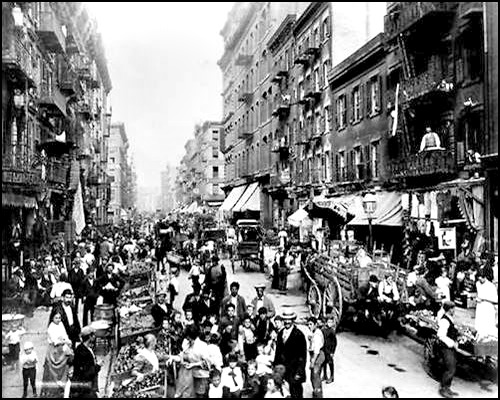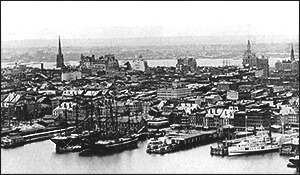

“I found nothing that particularly impressed me entering New York harbor . . .the filth of that port is impossible to describe, the adjacent streets are to the point of being puddles of mud and grime: a smelly and revolting sewer.”
“What struck me the most was the great commercial movement . . . I who came from Paris where the movement is already feverish, who had lived in London that surpasses Paris in terms of excitement, when I entered New York I was frightened. I immediately understood the reason why it was necessary to build an elevated railroad not only to make it easier for the public to cover the distances but also to remove them from the confusion of carts and horses and from the danger of being crushed by so much confusion.”

In his memoir Tommaso Juglaris recounts the rush of anxiety he felt upon first arriving on American shores: “Oh! How awful it is to find oneself abroad without being able to make yourself understood... I knew nothing at all of the language, the customs, nor the city.” Unable to speak English, knowing little of his new country, Juglaris was like so many other bewildered immigrants flooding the city. But he enjoyed several advantages that most immigrants did not. First, he was well-educated and professionally trained, with all the confidence this usually brings. Second, he had security: there was a job waiting for him. Indeed, his new employer Louis Prang thoughtfully dispatched a French-speaking guide to greet him at the New York docks and show him around the city. Last, but not least, Juglaris was an artist, with an artist’s critical eye and judgment, enabling him to absorb and evaluate the sights of his new world without being quite so readily overwhelmed by them.

What Juglaris encountered both fascinated and repelled him--a raw, young country too new and too busy to have developed a distinct sense of culture and taste. What little art he did see in a monument here and there was borrowed straight from Europe. The filth of the streets, particularly those around the port, revolted him. He found monotonous and impersonal the row upon row of brownstone residences that housed much of the city’s population, whether richer or poorer.

On the other hand, what vitality! The “great commercial movement” of the city astonished him. It exceeded anything he had encountered in London and Paris. In fact, Juglaris had arrived right in the middle of one of the most remarkable periods in American history. The country was booming. Immigration, the rise of industry and the railroads, the opening of the West—all were fueling explosive growth and development. This was particularly true in American cities, which seemed to leap from the ground at every turn. It was the era Mark Twain dubbed the “Gilded Age,” when the fortunate few—the so-called “robber barons”--were making immense fortunes and beginning to spend them on opulent mansions and lavish lifestyles. However, some of that same wealth was being devoted to wider civic purposes. On the uptown streets of Manhattan and on main streets across the breadth of America a profusion of public buildings were under construction--churches, opera houses, courthouses, hospitals, libraries, and even state capitols. At a time when American interest in architecture and art was also percolating as rarely before, there appeared to be no shortage of opportunities awaiting someone with Juglaris’s decorative talents, skills, and experience.